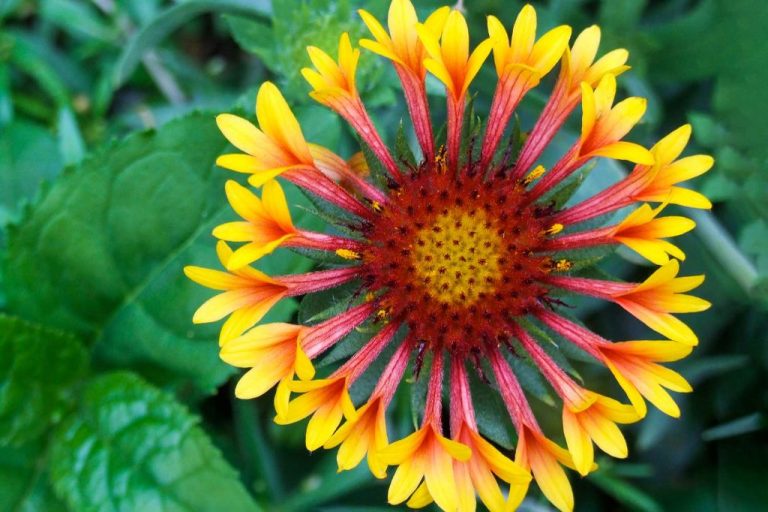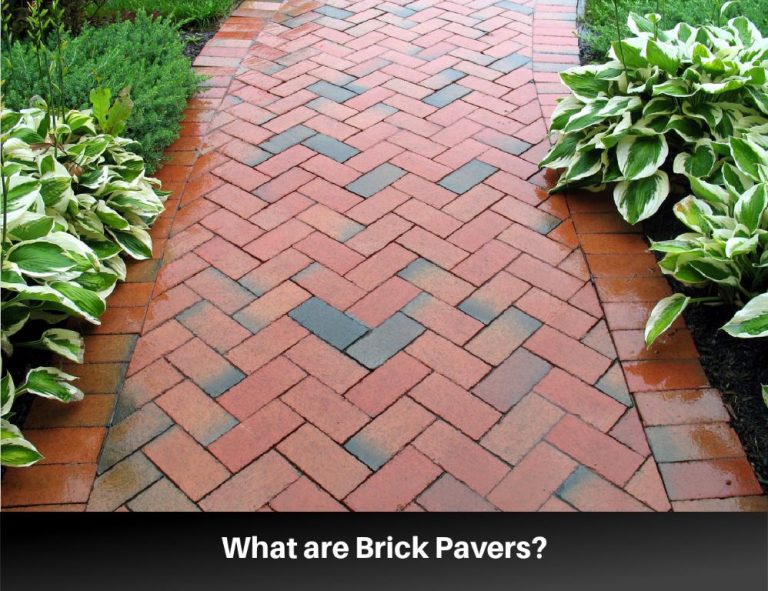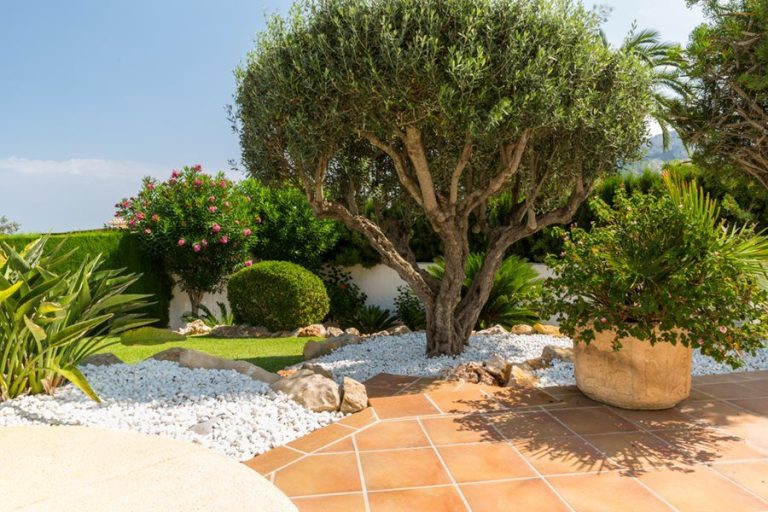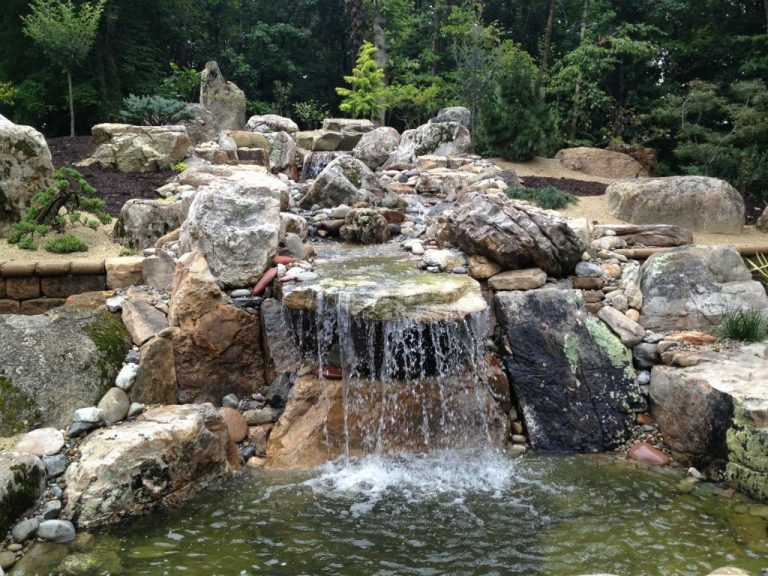Fire Pit Focal Point: Cozy Landscaping Ideas For Chilly Nights
Warm Up Chilly Nights with a Cozy Fire Pit
As the evening air turns crisp and temperatures drop, there’s nothing quite as inviting as gathering around a crackling fire on an autumn night. The flickering glow casts a warm light and radiates heat to take the chill off. Friends and family draw close together, sharing stories and s’mores as flames dance before them.
Adding a fire pit to your backyard or patio creates an instant focal point for alfresco fun. Not just for summertime use, today’s fire pits allow you to extend the season for outdoor living. Keep your landscape looking lively even as the leaves turn and daylight wanes.
Benefits of a Fire Pit
A fire pit provides many benefits that make it a worthwhile backyard addition. The ambiance and coziness a fire pit provides are unmatched. The crackling fire and glowing embers create a warm, inviting setting for relaxing alone or chatting with friends and family. A fire pit extends the outdoor living season, allowing you to comfortably spend time outside well into the cooler evenings of spring, summer, and fall.
Fire pits are ideal gathering places that bring people together. The fire encourages conversation and connection. Roasting marshmallows or cooking over an open flame are fun activities for kids and adults alike. Entertaining is easy with a fire pit providing a beautiful focal point.
Outdoor living spaces with a fire pit can boost a property’s value. Fire pits are attractive features that homeowners enjoy. The addition can set your backyard apart and make your home more desirable if selling.
Fire pits promote mindfulness and relaxation. The hypnotic flames provide a point of focus to practice being present (Lancaster General Health, 2022). Backyard fire pits allow you to unwind right at home.
Fire Pit Designs
There are several common types of fire pits to choose from depending on your needs and preferences (Types of Fire Pits: What’s best for your yard?, 2022). The main categories are wood-burning, gas (propane or natural gas), portable, and in-ground fire pits.
Wood-burning fire pits allow you to burn real wood for a traditional campfire experience. These are often made from stone, brick, or metal. Wood choices like cedar and hardwoods produce less smoke. A spark screen helps contain embers and promotes safety.
Gas fire pits utilize propane or natural gas fuels to create flames. These convenient, mess-free options provide the ambiance of real fire without the work of dealing with wood. Propane models are portable, while natural gas fire pits connect to a home gas line. Both offer adjustable flame heights.
Portable fire pits come in a variety of shapes like small cauldrons. These lightweight, weather-resistant models run on propane or gel fuels, making them easy to move or stow away. Their smaller scale suits cozy gatherings.
For a permanent focal point, consider an in-ground fire pit. Masonry or prefabricated models can be installed at the center of a patio or backyard retreat. Surround it with comfy seating and an eye-catching landscaped border.
Materials
The most common materials for building a fire pit are brick, stone, metal and concrete. Brick and stone create a classic rustic look and feel. Brick fire pits can be built with a combination of regular bricks, firebricks and mortar. Use firebricks on the interior surface for heat resistance. Stone fire pits look beautiful but require extra care when sourcing the right type of stone that can withstand high heat. Granite, limestone, and lava rock are good options (Lowes).
Pre-fabricated metal fire pits can be purchased or custom built from materials like steel, cast iron or copper. These modern metal fire pits allow for intricate designs and come in various shapes and sizes. Choose corrosion-resistant metals like stainless steel or invest in a protective cover. Pre-made metal fire pits tend to be lightweight and portable (Lowes).
Concrete fire pits are durable, weather resistant and easy to clean. They can be custom built on-site or pre-cast in a mold. Concrete mixes that contain aggregates like gravel withstand high heat better than plain concrete. Use caution when sourcing concrete fire pit liners, as lower quality concrete may crack when exposed to heat (Home Depot).
Placement
When deciding where to place your fire pit, there are a few key factors to consider for safety and enjoyment. Most experts recommend situating the fire pit at least 10 feet away from any structures, including your home, shed, deck, or fence, as well as any overhanging branches or flammable materials (source). This clearance helps prevent sparks from igniting anything around the pit.
Many people opt to install their fire pit on an existing patio or deck, which provides a nice hardscape foundation. Be sure to check the decking material is non-flammable if placing the pit on a wood deck. Locating the fire pit on a patio or deck also makes it convenient to run a gas line if installing a gas fire feature (source).
Another popular placement is directly on the lawn or a dedicated gravel or paved area of the yard. Allow ample space around the fire pit so people have room to relax in chairs safely away from the flames and heat. Face the seating area opposite from the prevailing wind direction so smoke doesn’t blow directly onto guests.
Landscaping
Proper landscaping around a fire pit can enhance comfort and ambiance. Consider the following landscaping ideas:
Seating: Arrange benches, chairs, or logs around the fire pit to accommodate people gathering. Leave enough space between seating areas for walking around the fire. Rocky ledges or masonry benches built into the design can provide integrated seating options.
Lighting: Strategically place lighting elements like path lights, spotlights, or lanterns to illuminate walkways and seating areas for safety. Up-lighting surrounding trees or shrubs can accentuate the space.
Plantings: Use trees, shrubs, ornamental grasses, and groundcovers to define the space and create a backdrop for the fire. Heat and smoke tolerant plant choices like junipers, spruces, roses, lavenders, sedums, and succulents can thrive close to the fire.

Hardscaping: Materials like flagstone, pavers, gravel, or brick can cover the ground around the fire pit, providing textural interest. Consider using the same materials around the pit as the rest of the hardscape to visually tie the areas together.
See some inspiring examples of fire pit landscaping: [URL1]
Safety
Fire pits can pose safety hazards if not properly constructed, used, or supervised. According to the U.S. Fire Administration, it’s important to use fire pits at least 10 feet away from structures or anything flammable (1). Wind direction should also be monitored to prevent embers from spreading.
Basic fire safety rules apply when using a fire pit. Only adults should start fires or add more fuel when needed. Fires should never be left unattended, even for a few minutes. A fire extinguisher, sand, water bucket or garden hose should be kept nearby in case of emergencies (2).
Proper supervision of children around fire pits is critical. Children should be taught to stay at least 3 feet away from the fire and never allowed to throw anything into a fire pit. Sparks can fly out and cause burns or ignite clothing (3). Teach children to alert adults if the fire gets out of control rather than trying to extinguish it themselves.
To prevent burn injuries, sturdy screens should surround fire pits on all sides. Only heat-resistant materials should be used around the pit. Wear proper footwear and avoid loose-fitting or flammable clothing near the open flames.
Sources:
(1) https://www.usfa.fema.gov/prevention/outdoor-fires/
(2) https://www.bobvila.com/articles/fire-pit-safety/
(3) https://www.hgtv.com/outdoors/landscaping-and-hardscaping/outdoor-fire-pits-and-fire-pit-safety
Maintenance
Proper maintenance is key to ensuring your fire pit stays in good working order and looks great for years to come. Here are some tips for cleaning, covering, and making repairs to your fire pit:
For cleaning, remove any ash, charcoal, and debris after each use with a small shovel or fireplace brush. Let the fire pit cool completely before cleaning. Use a wire brush to remove any built up residue on the grates or interior surfaces. Wash periodically with warm, soapy water. Rinse and dry completely.
Check for rust, cracks, or damage after cleaning. Use touch-up paint on any scratches to prevent rusting. Replace damaged grates or parts as needed. Re-seal any cracks with high-heat silicone or fireplace mortar to prevent further damage.
When not in use for extended periods, cover your fire pit with a heavy-duty vinyl cover secured tightly to protect from weather damage. Store cushions and accessories indoors. For gas fire pits, turn off the gas supply valve and cover the burner tubes.
For optimal lifespan, clean the fire pit after every 3-5 uses during fire pit season. Inspect for damage and re-seal as needed each year. With proper maintenance, your fire pit can provide warmth and ambiance for many years.
Costs
Fire pits can range dramatically in price depending on the design, materials, and size. According to LawnLove, the average cost of a fire pit is around $830, with installation making up about half of that total. Most homeowners spend between $250 and $2,200 on a fire pit.
On the low end, a basic 24-inch wide fire pit kit made of concrete or stone can cost $150 to $500 just for the materials. On the high end, a custom designed 72-inch wide fire pit made of high-end materials like flagstone, cultured stone, or brick can cost $1,300 to $4,500 or more for materials and professional installation.
Somewhere in the middle, a 36 to 60-inch fire pit made of concrete,stone or pavers may cost $800 to $2,200. Gas fire pits also range from budget propane models at around $150 up to $2,000 or more for elegantly designed gas fire pits.
The shape of the fire pit also impacts costs. Round fire pits are often less expensive than custom shapes. The most budget-friendly option for many homeowners is a DIY backyard fire pit made from retaining wall blocks or pavers.
Conclusion
A fire pit can provide a warm, inviting focal point to any backyard. Throughout this article, we’ve explored the benefits of fire pits, including bringing people together and extending the enjoyment of your yard into colder seasons. We looked at various fire pit designs like stone, brick, and metal options. Materials like stone, brick, concrete and metals all have different aesthetic qualities. Carefully choosing the location and surrounding landscaping is key for safety and ambiance. While fire pits require some maintenance and have associated costs, many find the joy they bring well worth the investment. With proper precautions, a fire pit can provide years of cozy memories. We hope these ideas have sparked inspiration for creating your own magical fire pit gathering place.






